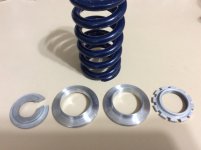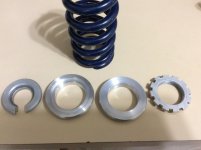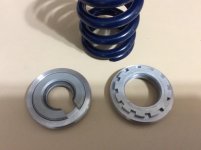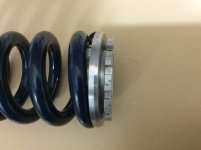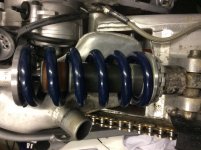h0gr1der
New member
I can't afford all those outstanding aftermarket shocks, and being somewhat satisfied with the ride of the RTL, I only want to upgrade the spring rate on the rear.
Does anyone have the OEM spring Specs? I've read some really technical suspension posts on here, but haven't found what I'm looking for. Ultimately, I'd like to set up my OEM rear shock so that with me aboard, there is zero pressure in the automatic leveling air bag while maintaining the original ride height. I'm 230 lbs with about 10 lbs of permanent accessories in the rear bag. Any ideas? Dumb idea?
I did add the Baja Ron front pre-load adjusters, and those work great, looking to match up the rear to the front. May also help with the air compressor reliability issue as an added benefit.
Does anyone have the OEM spring Specs? I've read some really technical suspension posts on here, but haven't found what I'm looking for. Ultimately, I'd like to set up my OEM rear shock so that with me aboard, there is zero pressure in the automatic leveling air bag while maintaining the original ride height. I'm 230 lbs with about 10 lbs of permanent accessories in the rear bag. Any ideas? Dumb idea?
I did add the Baja Ron front pre-load adjusters, and those work great, looking to match up the rear to the front. May also help with the air compressor reliability issue as an added benefit.

